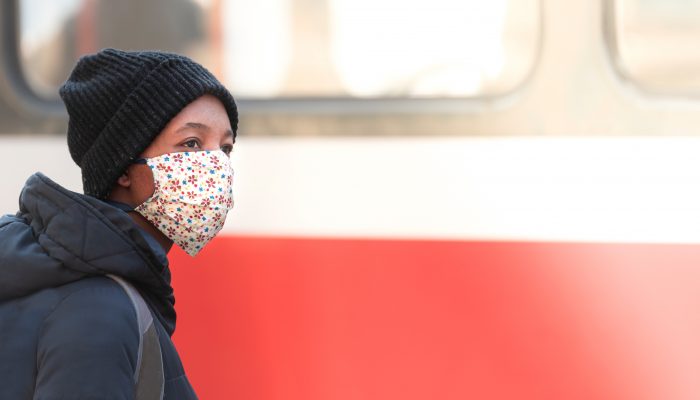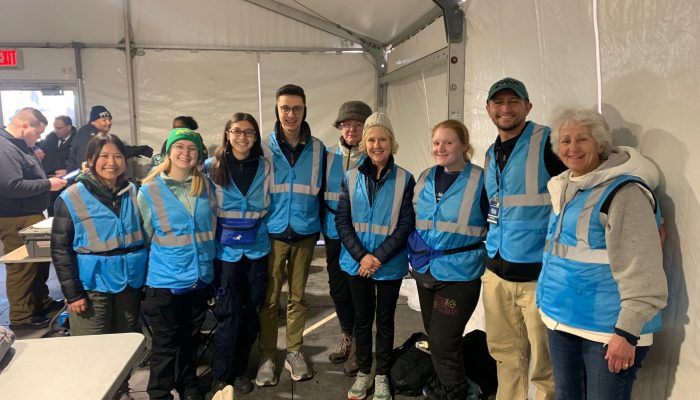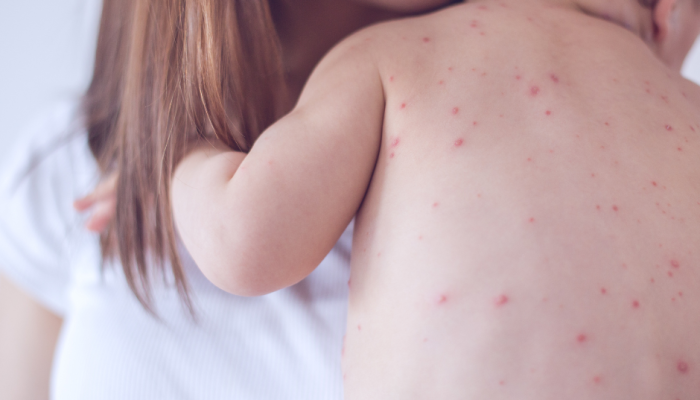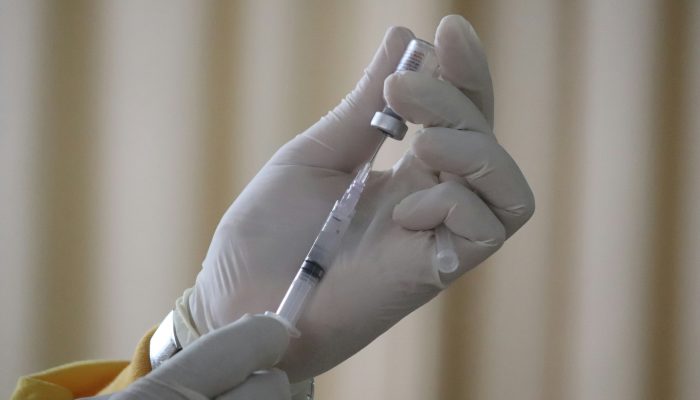UPDATE: On June 26, Mayor Jim Kenney and Health Commissioner Dr. Tom Farley signed an executive order requiring people to wear face coverings to prevent the spread of COVID-19 in Philadelphia.
As COVID-19 coronavirus spreads in Philadelphia, an increasing proportion of people that everyone encounters is likely to be infected. The City has enacted a “stay at home” order and recommendations on social distancing to reduce the number of person-to-person interactions that could lead to spread of the infection, and no use of personal protective equipment should be seen as an alternative to following these recommendations. However, work or caregiving duties may require some residents to come in close contact with others. These people may want to use barrier protections (face masks and face shields) at these times on the assumption that any contact with others presents some risk.
Residents should also wear a cloth mask when it is hard to keep safe distances from others. This could include going food shopping, going to work, or if you live in a group setting. You do not need a mask to go for a walk, run, or bike ride as long as you stay 6 feet from others who are outside.
The most effective personal protective equipment to prevent infection with COVID-19 are clear plastic face shields, N95 face masks, and medical-grade surgical masks. Face shields, N95 masks, and surgical face masks are in limited supply and should be reserved for use by healthcare providers, who have the greatest risk of infection. Others may use simple cloth face masks and alternative face shields that are less effective but nevertheless provide some protection when contact with others is unavoidable.
Face masks
Fabric face masks can be made from a variety of common fabrics, carried easily in a pocket or bag, and placed over the mouth and nose when close interaction with others is required. Fabric face masks are more effective at blocking the transport of large respiratory droplets that are expelled when a person talks, coughs, or sneezes than they are at blocking the “droplet nuclei” that can be inhaled by another person. For this reason, fabric face masks should be used by persons likely to transmit the virus (i.e. persons with respiratory symptoms) and are substantially less valuable for persons trying to prevent acquisition of the virus.
To be effective, a face mask should fit well around the mouth and nose without gapping at the sides and should be comfortable enough for the user to be willing to keep it on. A soft, tight-weave fabric made of a cotton-poly mix is a reasonable choice for materials. Doubling or tripling the layers of fabric has not been shown to be of much benefit and makes the mask much harder to wear, so it is not recommended. If possible, the mask should have elastic loops at the sides that fit around the ears rather than ties, which makes re-use easier. If fabric face masks are used, they should be laundered when wet or soiled. The user should avoid touching the mask while in use and should wash hands and put mask in the laundry after use. A variety of patterns are available online. To see an example, watch “How to Make a Face Mask” on YouTube.
Face shields
Face shields are an effective way to protect against the spread of droplet-born viruses like coronavirus. They can be cleaned and re-used (see instructions below) and are more comfortable to wear than face masks and are likely to be more effective than homemade masks at preventing exposure when in close contact with an infected person.
Face shields should fit snugly on the forehead area to prevent slippage. For improved protection from infectious agents, face shields should be, at a minimum, full face length with outer edges of the face shield reaching at least to the point of the ear, and cover from the forehead to the chin. A cushion over the forehead can help to ensure that there is adequate space between the wearer’s face and the inner surface of the visor. For persons interested in producing their own face shields, watch “How to Make a Face Shield at Home” on YouTube or see directions below.
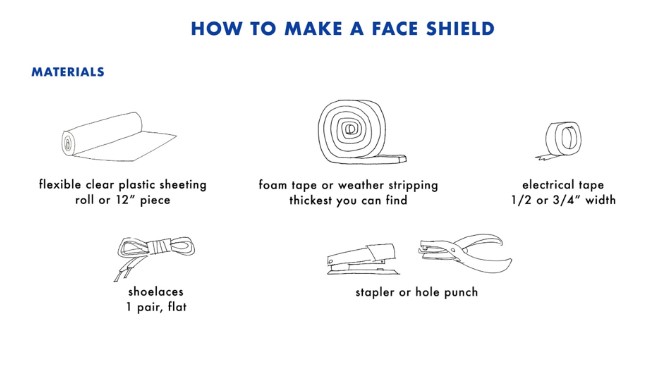
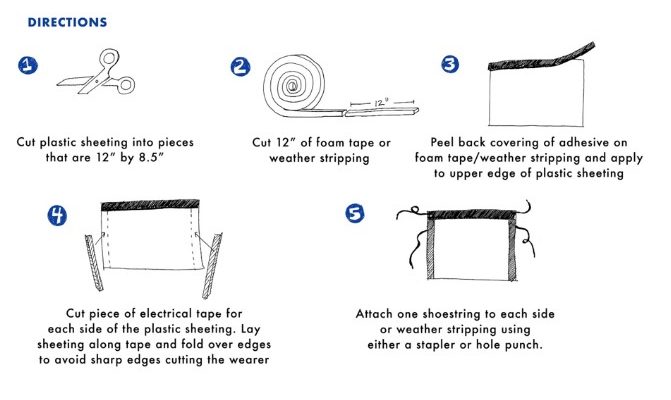
Cleaning your Face Shield (where available follow manufacturer instructions):
- While wearing gloves, carefully wipe the inside, followed by the outside of the face shield or goggles using a clean cloth saturated with neutral detergent solution or cleaner wipe.
- Carefully wipe the outside of the face shield or goggles using a wipe or clean cloth saturated with EPA-registered hospital disinfectant solution (or a household that contains bleach).
- Wipe the outside of face shield or goggles with clean water or alcohol to remove residue.
- Fully dry (air dry or use clean absorbent towels).
- Remove gloves and perform hand hygiene.

